History of Aviation in Kansas City
Introduction
Author-Uploaded Audio
00:00 / 00:00
Airline Mechanic Larry Chalberg remembers his 34-year career with TWA, including celebrity sightings and a two-wheeled crash landing
Text-to-speech Audio
These four panels in the center of the concourse connecter share both the history of aviation in Kansas City and the history of the city itself. Each of the four panels incorporated historic photographs and media with text that offers a detailed introduction to each topic while being mindful of the traveler's time. Highlights of the exhibit on aviation include information about the indigenous and enslaved peoples who first inhabited this land, and the various airports and terminals that have served the city, along with historic airlines such as the iconic Trans World Airlines that was once headquartered in Kansas City.
Images
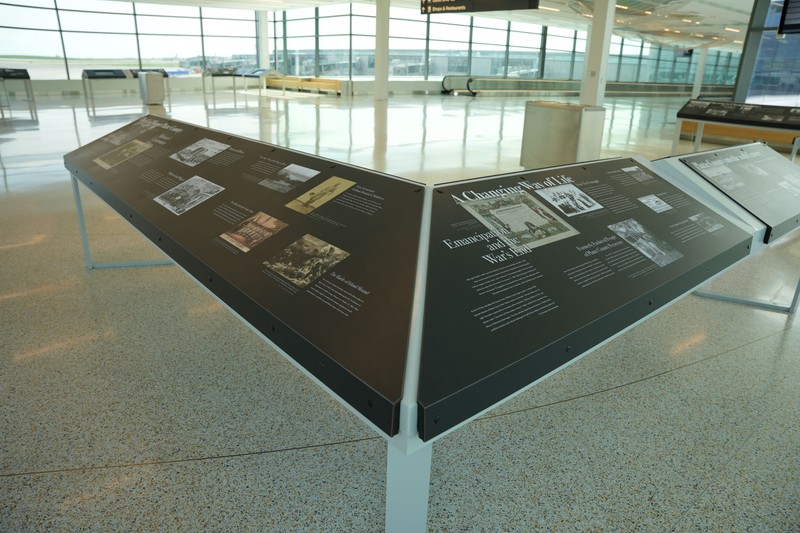
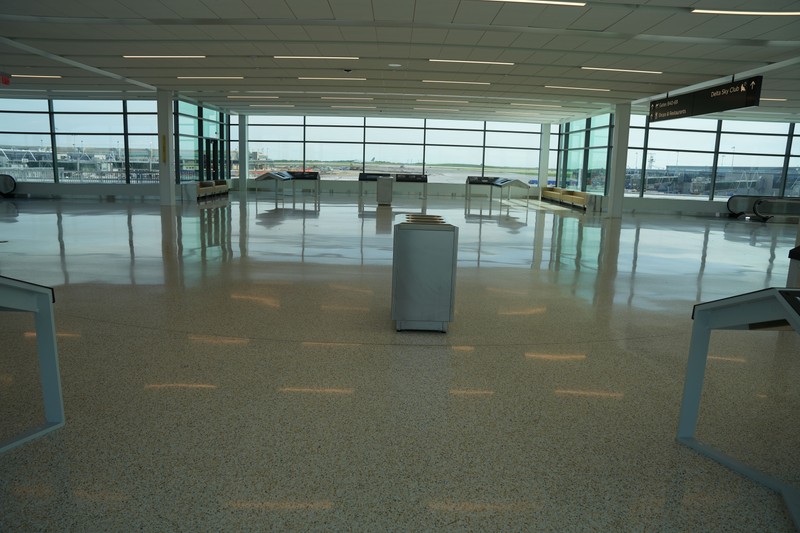
Lockheed Constellation, better known as the "Connie"

Kansas City's Municipal Airport Terminal with TWA Aircraft
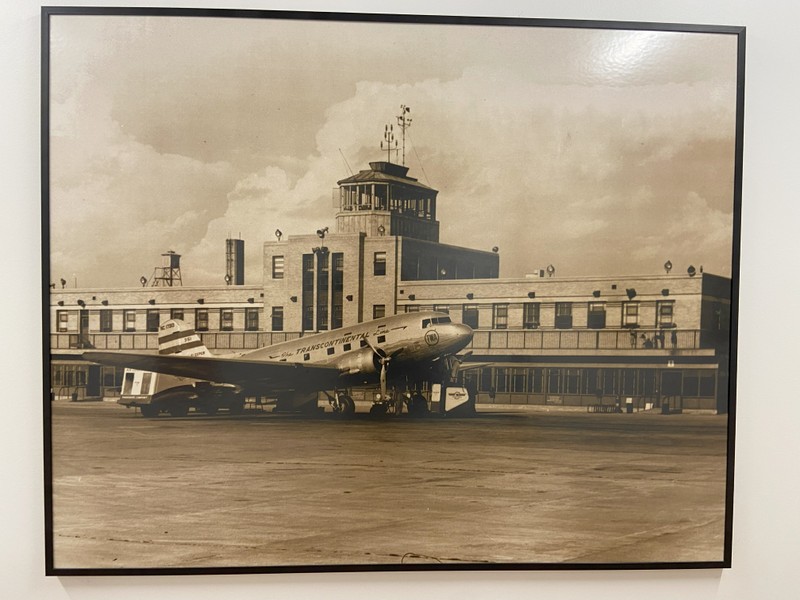
TWA Co-Founder Paul Richter's Pilot's License - signed by Orville Wright
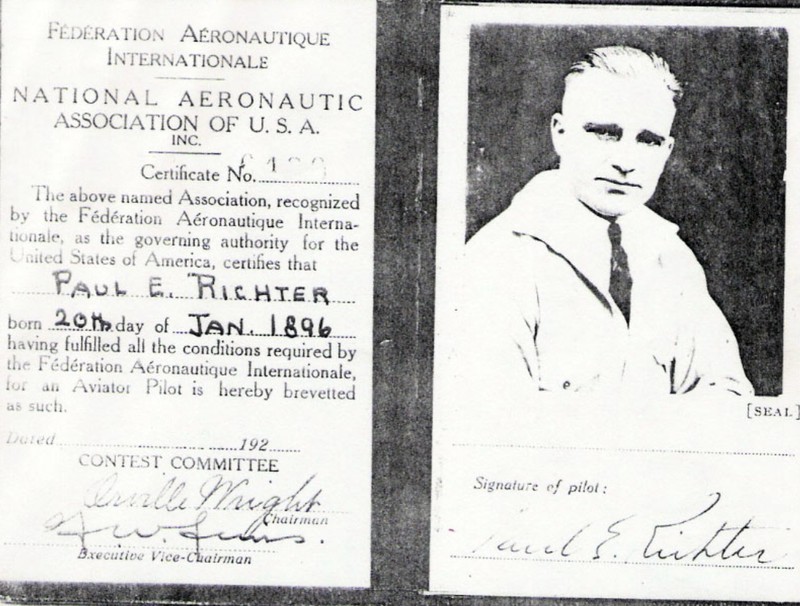
Transcontinental & Western Air, Inc. at Municipal Airport in downtown Kansas City
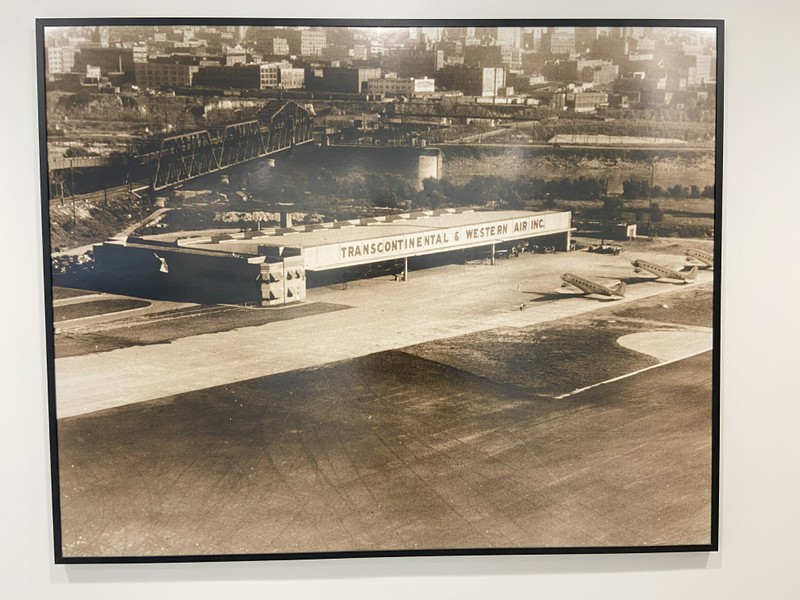
1937 Lockheed Electra at TWA Museum - Charles B. Wheeler Downtown Airport in Kansas City
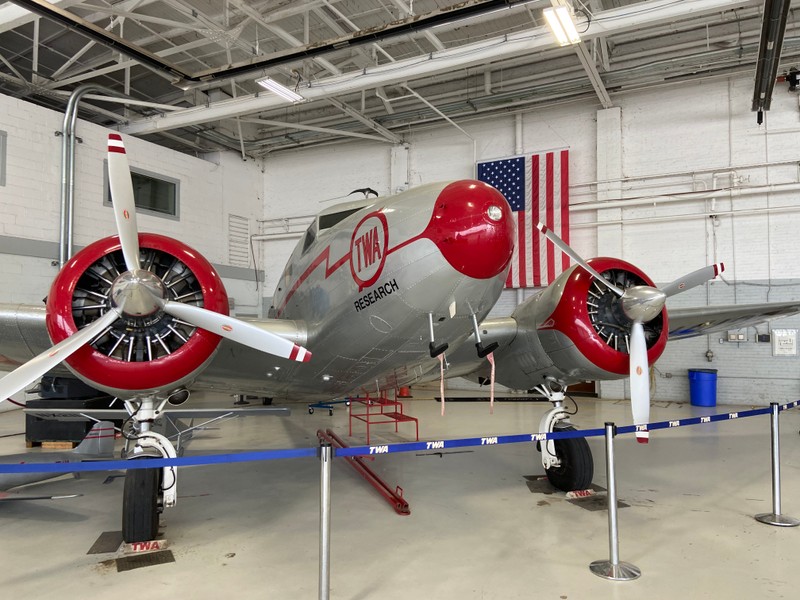
Larry Chalberg, TWA Airline Mechanic from 1967-2001
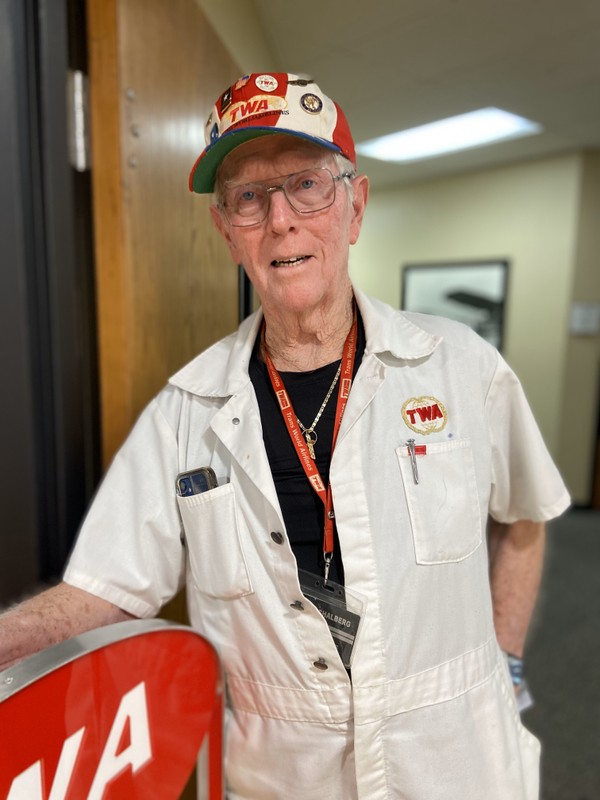
Boeing 727 Cabin Trainer used to train Attendants - TWA Museum at Charles B. Wheeler Downtown Airport in Kansas City
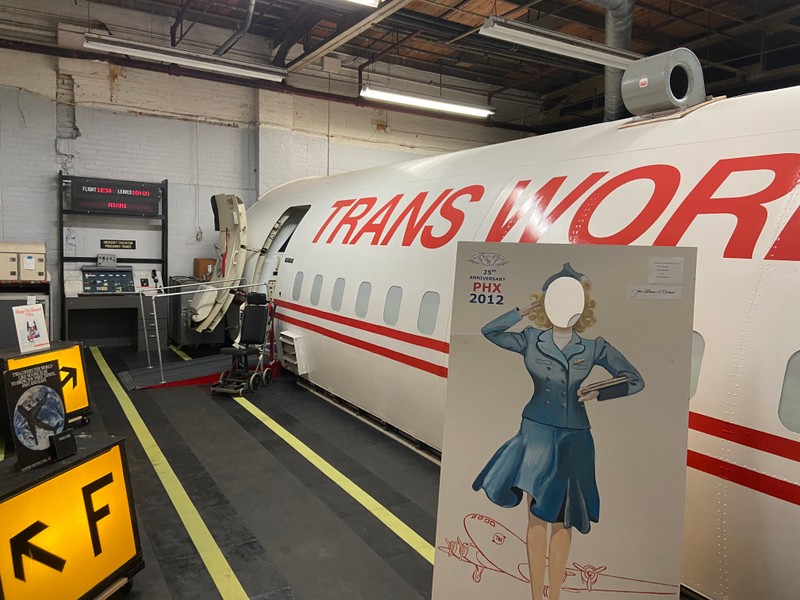
Theron B Watkins and Olivia Hughes Watkins were married, forming a significant partnership in their contributions to the Kansas CIty community
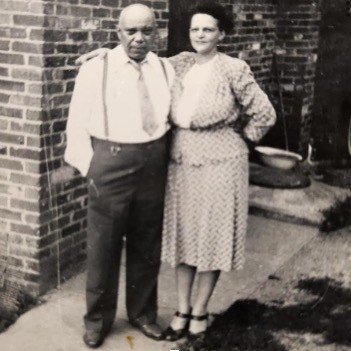
Warren R. Watkins, Jr., founder of the Watkins Foundation
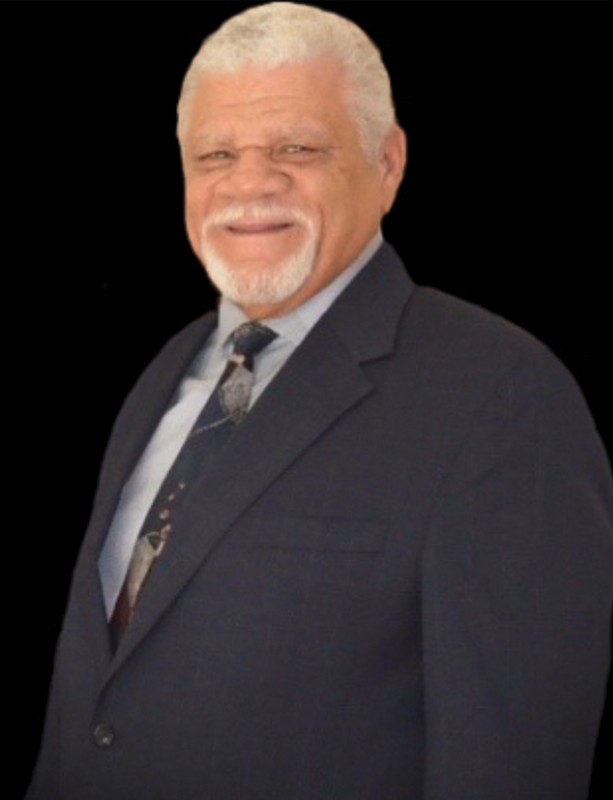
Warren R. Watkins Jr. and other descendants of the Miller Plantation, including his daughter Oralee Watkins McKinzy, his nephew Bruce R. Watkins Jr., and Dr. Mark Raab
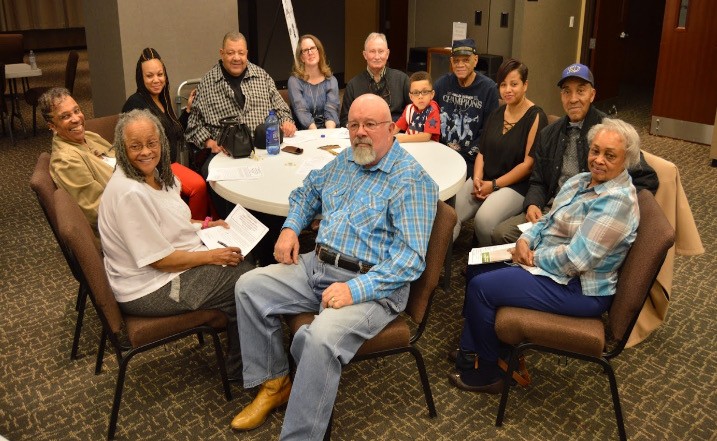
KCI Airport exhibit team, including Oralee McKinzy, Dr. Gene Chavez, Lucille Douglass, Theresa Watkins, Anna Marie Tutera, Glenn North, Stinson McClenon, Rodney Thompson, Angela Hackenback, and others recording for KSHB 41 regarding our project at the Airport
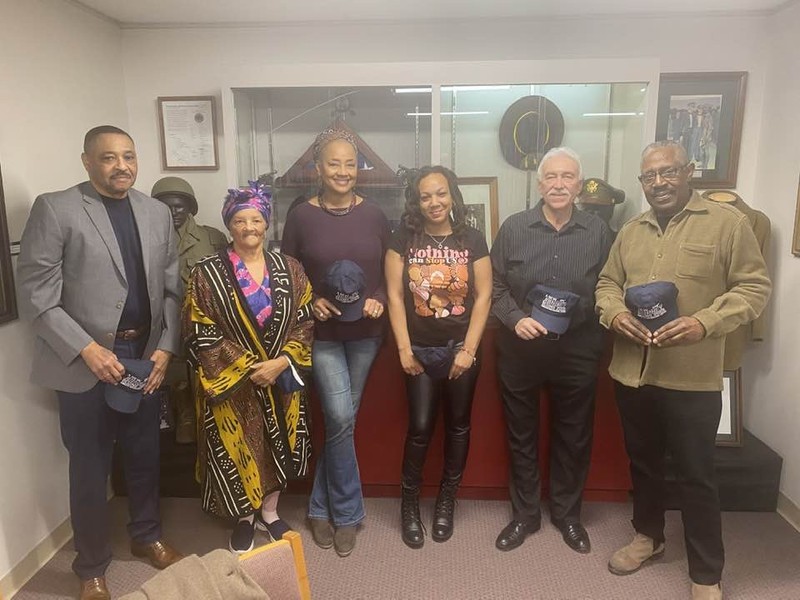
Oralee McKinzy, Dr.Gene Chavez, Lucille Douglass, and Anna Marie Tutera (KC Museum Executive Director) were interviewed about the airport project on Northeast News
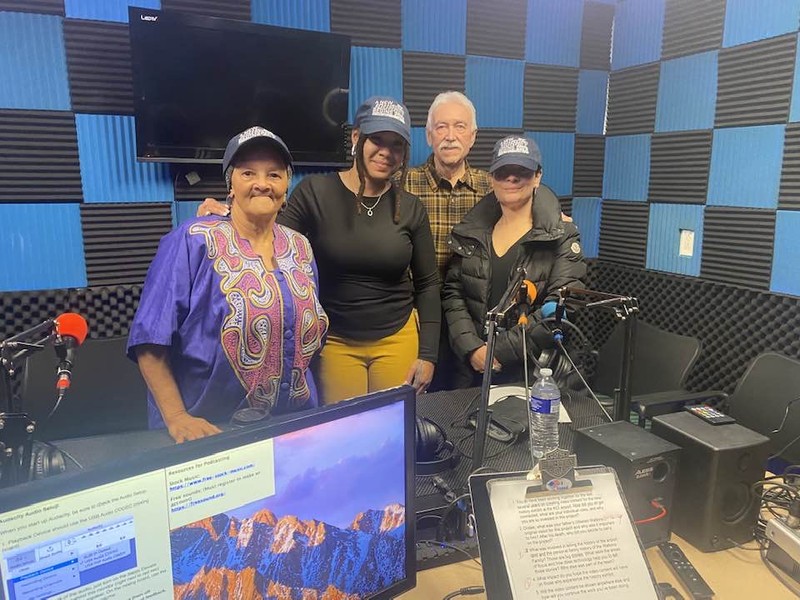
Life 360 and The Watkins Foundation are partnered with UNESCO Creative City KC Inc., founded by Anita Dixon-Brown and co-founded by Dr. Jacob Wagner, with Bukeka Blakemore serving as Deputy Director
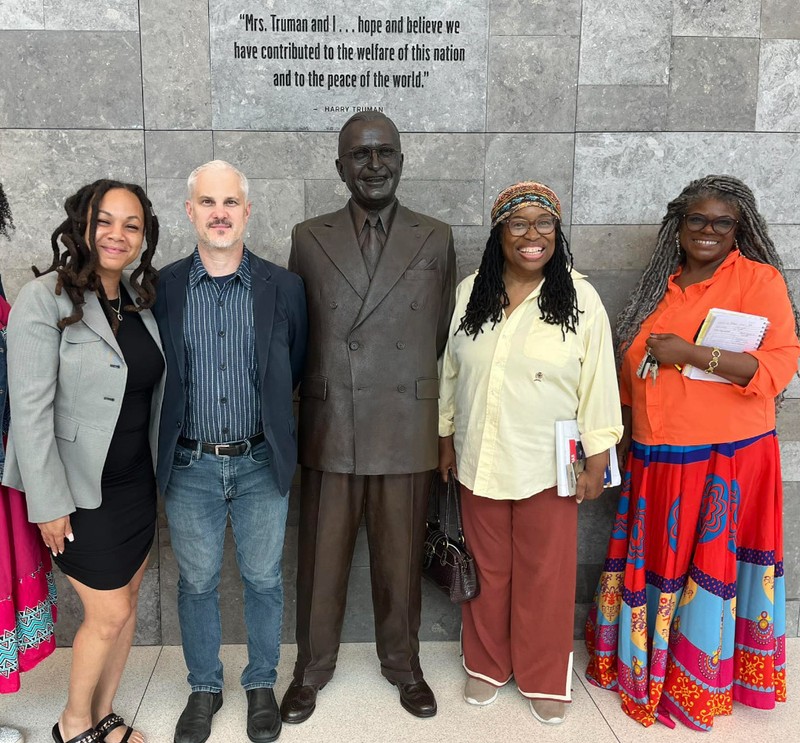
Oralee McKinzy has embraced her role as a steward of her family's legacy. Through Life 360 and The Watkins Foundation, she is driving progress and creating opportunities for advancement, ensuring her family's contributions and narratives remain integral to the broader community.
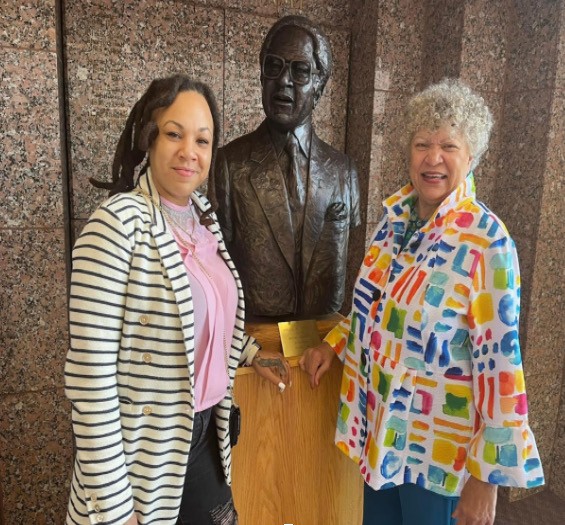
Backstory and Context
Author-Uploaded Audio
00:00 / 00:00
Oralee McKinzey talks about the inhabitants of this land before it became KCI Airport, including enslaved peoples
Text-to-speech Audio
Kansas City’s history with powered flight dates back to the early 20th century, when aviator Charles K. Hamilton demonstrated his aircraft in Overland Park on December 26, 1909. Kansas City enthusiastically embraced aviation. In 1910, J.C. McCallum designed and manufactured the first aircraft in the city, which diverged from other airplane designs of the time by having a propeller which pulled the aircraft forward instead of pushing it from behind. And local developer William B. Strang built an aviation park around 1911 which included hangars, a grandstand, and an aviation school.
Following World War I, aviation schools flourished in the Kansas City area: by 1930, eight separate schools were in operation, including the Curtiss-Wright Flying Service, Art Goebel School of Flying, and the Porterfield Flying School. Porterfield Flying School was based out of Richards Field, the area’s first commercial airport, which opened in 1922 and was named after Air Force Lt. John F. Richards, the first pilot from Kansas City to die in combat during World War I.
Richards Field is where air mail service began in Kansas City in 1926. Chamber of Commerce President Lou Holland convinced Post Office officials to include Kansas City as a stop between Chicago and Dallas. A new air mail plane, Miss Kansas City, was christened at the launch ceremony on May 12, 1926, where thousands watched as the first mail deliveries arrived from Chicago. However, Richards Field soon became inadequate for Kansas City’s burgeoning air traffic, and in 1927 the downtown Kansas City Municipal Airport was dedicated. Legendary flyer Charles Lindbergh attended the dedication at Municipal Airport and praised the location, helping put Kansas City on the map as an important air hub.
Lindbergh remained a part of aviation in Kansas City, helping chart the “Lindbergh Line” for airline Transcontinental Air Transport (TAT) in 1929, a coast-to-coast, 48-hour route which was a combination of air and rail travel. TAT merged with Western Air Express the next year, in 1930, and the combined companies formed a new airline which would become world famous: Transcontinental and Western Air, better known as TWA.
TWA chose Kansas City for its new headquarters in 1931, thanks to the efforts of Lindbergh, Lou Holland, and other city leaders, and a Kansas City icon was born: TWA employed nearly 13,000 people within the state of Missouri at one time. TWA was known for aviation innovation, first-class flight experiences, and its red-carpet treatment. The airline was known as “The Airline of the Stars” because of the glamorous celebrities that frequented its flights. T&WA (Transcontinental and Western Air) officially changed its name to Trans World Airlines in 1950, keeping the three-letter designation: TWA.
The 50s, 60s, and 70s also saw the current Kansas City International Airport location come into being, thanks in part to TWA’s influence. As early as the 1940s city leaders recognized the need for a larger airport. TWA’s maintenance overhaul base was located at Fairfax Airport in the early 1950s, across the Missouri River from Municipal Airport. But a flood in 1951 destroyed that maintenance site and disrupted operations at Municipal Airport, accelerating the search for a new site. TWA moved its overhaul operations to the current site of Kansas City International Airport in 1957, then named Mid-Continent Airport, and asked city officials to expand Mid-Continent since Municipal Airport was becoming too small for commercial jet traffic. The city agreed: in 1966, a $150 million bond passed and allowed construction to begin, and Kansas City International Airport opened on the Mid-Continent site in 1972. The original three-terminal design was innovative for its time and allowed passengers to drive almost to their gate, but following the 9/11 terrorist attacks, new security procedures made the airport much harder to navigate.
The current terminal was opened in 2023, to update Kansas City’s airport again for modern air travel. Even though aviation giants like TWA are no longer operational in the area (TWA filed for bankruptcy in 2001 and was absorbed into American Airlines), Kansas City’s aviation history has positioned it to embrace the future of flight.
The current KCI site has not been without controversy: in 2007, descendants of enslaved people who lived on a plantation that became part of the airport’s land were notified that a racetrack would be built there. Oralee McKinzey and her father Warren R. Watkins Jr. fought this expansion and were able to halt the racetrack project in 2008. Their foundation went on to advocate for the recognition of the lives of those who lived and were buried on this land. Listen to the audio clip by Oralee McKinzey to learn more about their efforts.
Cite This Entry
Admin, Clio, David J. Trowbridge, and Brandon Allen. "History of Aviation in Kansas City." Clio: Your Guide to History. August 21, 2024. Accessed April 3, 2025. https://theclio.com/entry/170503
Sources
History of TWA, TWA Museum. Accessed July 26th, 2024. https://twamuseum.org/history .
TWA Co-Founder Paul Richter's Pilot's License, signed by Orville Wright, TWA Spirit. Accessed July 26th, 2024. https://www.twaspirit.com/paul_license.html.
TWA - Airline of the Stars, TWA Flight Attendants. Accessed July 26th, 2024. https://www.twafltattendants.com/stars.html .
Paul Ernest Richter Jr., National Air and Space Museum. Accessed July 26th, 2024. https://airandspace.si.edu/support/wall-of-honor/paul-ernest-richter-jr .
Wieberg, Steve. ‘Nearest by Air to Everywhere’ - Library Exhibit Charts Kansas City’s Aviation History, Kansas City Public Library. June 23rd, 2021. Accessed July 26th, 2024. https://kclibrary.org/news/2021-06/%E2%80%98nearest-air-everywhere%E2%80%99-library-exhibit-charts-kansas-city%E2%80%99s-aviation-history.
Photo by David Trowbridge
Photo by David Trowbridge
https://www.historynet.com/the-legendary-lockheed-constellation/
Photo courtesy of TWA Museum
https://www.twaspirit.com/paul_license.html
Photo courtesy of TWA Museum
Photo courtesy of TWA Museum
Photo courtesy of Larry Chalberg
Photo courtesy of TWA Museum
Oralee McKinzey
Oralee McKinzey
Oralee McKinzey
Oralee McKinzey
Oralee McKinzey
Oralee McKinzey
Oralee McKinzey

